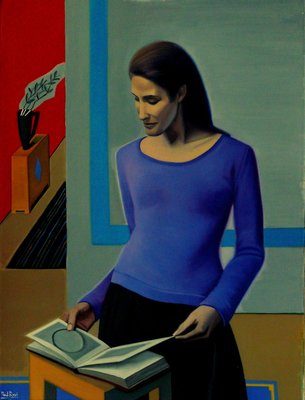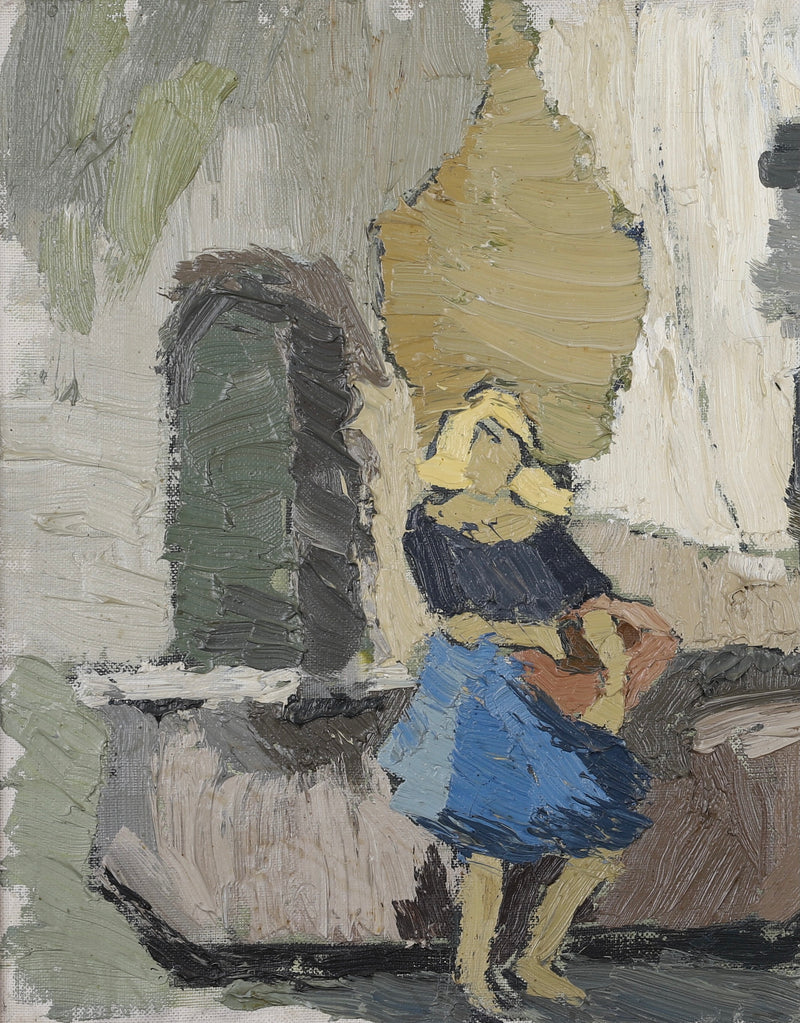Grasping Composition and Shade in Figurative Oil Painting
Grasping Composition and Shade in Figurative Oil Painting
Blog Article
Grasping the Art of Figurative Oil Paint: Important Tips and Techniques for Aspiring Artists
Figurative oil paint stands for an intricate junction of method and interpretation, demanding a detailed understanding of human anatomy, make-up, and shade theory. Aspiring artists must not only realize the subtleties of type and movement but additionally take into consideration how compositional techniques can amplify emotional vibration. Furthermore, an expedition of color harmony and appearance strategies can considerably boost the aesthetic impact of their job. As musicians development in their journey, the concern occurs: just how can one cultivate a distinctive design while understanding these fundamental aspects? The subsequent expedition of these vital aspects promises to light up the path onward.

Understanding Human Composition
Recognizing human anatomy is fundamental for any type of musician aspiring to grasp figurative oil paint. A thorough grasp of the human kind enables artists to create realistic depictions that reverberate with audiences. Expertise of anatomical structures, such as joints, bones, and muscles, offers important insight right into exactly how the body steps and positions.
Artists must acquaint themselves with the proportions of the human figure, including the connection between different body components and exactly how these percentages vary throughout sexes and ages. This recognition permits precise scaling and perspective in their job. Furthermore, recognizing the underlying musculature enhances the capacity to depict activity and tension in a figure, resulting in an extra vibrant and engaging structure.
Examining composition likewise aids in determining refined nuances in posture and expression, which are critical for sharing emotion and narrative within a painting. Resources such as anatomical books, life drawing sessions, and on-line tutorials can be vital tools for artists looking for to grow their physiological knowledge. Inevitably, grasping human anatomy not just boosts technological skill yet also enriches a musician's creative vision, enabling them to bring their figurative oil paintings to life with credibility and depth.
Value of Make-up

Key principles of structure consist of balance, unity, and focal factors. Attaining equilibrium guarantees that no single aspect bewilders the others, while unity creates a feeling of harmony throughout the piece. Centerpieces accentuate considerable facets of the art work, permitting viewers to engage with the story or theme a lot more deeply.
In addition, using leading lines and the regulation of thirds can considerably enhance structure. Leading lines naturally assist the viewer's stare via the paint, while the policy of thirds supplies a structure for placing crucial elements in an aesthetically enticing way. By grasping structure, aiming musicians can raise their figurative oil paints, changing them into compelling visual stories that reverberate with their target market.
Mastering Color Concept
Color theory serves as a basic facet of figurative oil painting that complements the concepts of make-up. Comprehending the color wheel, which includes key, additional, and tertiary shades, is necessary for creating unified combinations and effective aesthetic narratives.
Trick principles such as value, shade, and saturation play a critical function in identifying the state of mind and effect of a painting. Artists need to check out amazing and warm shades to evoke specific emotions; check this site out cozy colors often share power and passion, while great colors can impart peace and serenity.
The partnership in between corresponding colors-- those contrary each other on the color wheel-- can develop striking contrasts and dynamic make-ups. When juxtaposed, these shades enhance each other's vibrancy, attracting the viewer's eye and adding deepness to the artwork.
Additionally, understanding comparable shades permits artists to accomplish a sense look here of unity and comprehensibility. By picking shades that are adjacent on the wheel, one can maintain a well balanced atmosphere throughout the piece.
Eventually, understanding shade theory outfits aspiring artists with the devices essential to manipulate color deliberately, improving their capacity to communicate emotion and story with figurative oil painting. figurative oil painting.
Techniques for Appearance
A selection of techniques can successfully produce structure in metaphorical oil paint, including deepness and measurement to the art work. One fundamental method is the use of impasto, where thick layers of paint are used to the canvas, enabling a three-dimensional top quality. This technique improves light communication, producing vibrant visual rate of interest.
One more technique is scumbling, which involves using a slim layer of lighter paint over a dried out darker layer. This strategy permits the underlying shade to show with, leading to a soft, textured effect that can evoke a sense of atmosphere or age. Dry brushing is also necessary; making use of a completely dry brush with very little paint, artists can produce delicate textures and fine lines, excellent for recording the nuances of skin or textile.
In addition, combination knives can be employed to apply or scuff paint, creating special patterns and structures. Experimenting with different tools and products, such as sponges or dustcloths, can additionally enrich the textural top quality of a paint. Ultimately, grasping these techniques calls for method and testing, allowing musicians to find the diverse tactile top qualities that can raise their figurative jobs.
Establishing Your Special Design
An artist's one-of-a-kind style is typically the culmination of individual experiences, influences, and strategies refined over time. Creating this individuality have a peek here in metaphorical oil painting calls for a conscious effort to discover both your inner self and the more comprehensive creative landscape. Begin by assessing the styles and subjects that reverberate with you emotionally; your interest will infuse credibility right into your work.
Research study numerous designs and movements, yet instead of copying, essence components that speak with you - figurative oil painting. Explore various techniques, color combinations, and make-ups, allowing on your own the flexibility to play without the pressure of perfection. Maintain a sketchbook or journal to record your ideas, concepts, and creative progress; this will certainly work as an important resource for determining reoccuring preferences and motifs
Look for useful feedback from peers or mentors, as they can provide insights that brighten elements of your work you might ignore. Be client with yourself; the journey of developing an unique design is continuous, evolving with every canvas and each brushstroke you come across.

Verdict
Understanding metaphorical oil painting necessitates a detailed understanding of human makeup, make-up, and shade concept. Welcoming these fundamental concepts will dramatically profit aiming musicians on their imaginative trip.
Metaphorical oil painting represents a complex intersection of technique and interpretation, requiring an extensive comprehension of human composition, composition, and color theory. An exploration of color harmony and appearance methods can significantly enhance the visual impact of their job. By understanding structure, aspiring artists can elevate their metaphorical oil paintings, changing them right into compelling aesthetic tales that resonate with their audience.
Experiment with various strategies, color palettes, and compositions, permitting on your own the flexibility to play without the pressure of excellence.Grasping figurative oil paint demands a thorough grasp of human anatomy, make-up, and shade theory.
Report this page